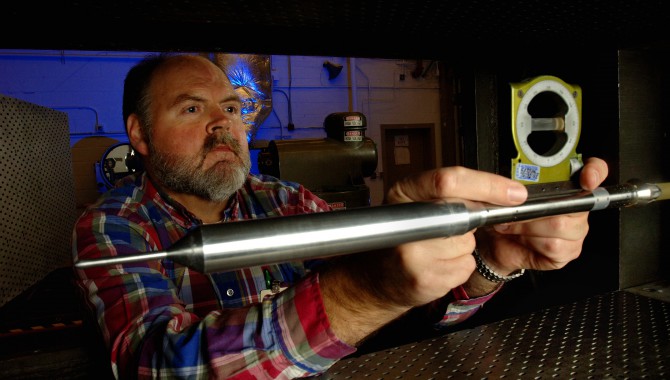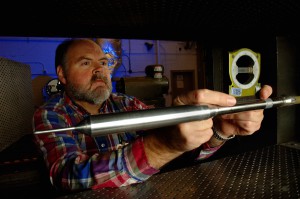
By Garry Lyles
In the past, Agency-wide requirements documents for program and project management at NASA have typically been shaped by contributions and advice from the field centers, the mission directorates, and people who have been involved in past programs. 7120.5D represents a new approach because the team that developed it also received real-time input from a program currently being formulated—Constellation, NASA’s largest new program. The Constellation program and the Exploration Systems Mission Directorate (ESMD) have collaborated with the 7120.5D team to develop realistic, workable processes and procedures early in the game. This provided an important reality check for the document’s usability and created a sense of ownership of this critical process document within the program, which represents the direction of human space flight at the Agency for the foreseeable future. Everybody involved wanted to take advantage of this opportunity to get the processes right the first time. NASA’s future accomplishments will depend on it.
As the 7120.5D team worked on the policies and requirements spelled out in that document, the Constellation team developed requirements for its program. At the request of the Constellation program manager, the Office of the Chief Engineer established a technical requirements team to help determine processes to apply to the new governance model established by NASA Policy Directive 1000.0. This team would also provide information to the 7120.5D team that would allow them to properly document these processes, which define the working relationship between the program and projects and the technical authority as well as the role of the technical authority within the program’s management structure. Processes for managing selections, changes, and waivers to institutional engineering requirements (specs and standards) as well as dissenting opinions between the program and the technical authorities were established. These processes were tested in the real program environment as Constellation developed its requirements. For example, this testing within the Constellation program helped establish the method for effectively integrating technical authorities into a program’s requirements development, configuration management, and control processes. The program contributed to the scope and definition of the Standing Review Board to provide oversight at each critical review to support key decision points throughout the program life cycle. The process for handling dissenting opinions was also established and clearly documented within 7120.5D.

Test engineer Alonzo Frost prepares a Constellation program crew launch vehicle model for testing in the Marshall Space Flight Center Aerodynamics Research Facility. Constellation played an important role in testing NASA’s new NPR 7120.5D policy.
Photo Credit: NASA Marshall Space Flight Center/D. Higginbotham
Since NASA has never had a requirements document for systems engineering in the past, Constellation will benefit from the requirements and common definitions captured in NPR 7123.1. The same good systems engineering practices are applicable to small science missions and large human space flight programs like Constellation. The processes defined by 7123.1 will give systems engineering a structure for formulating, designing, verifying, and operating a whole range of Constellation system elements that must work together to successfully accomplish a mission. For the lunar exploration mission, for instance, the Orion crew exploration vehicle system will function in cooperation with the Ares I crew launch vehicle, the lunar surface access module (LSAM), and the extra-vehicular activity systems. The LSAM, in turn, will function integrally with the lunar surface habitation and surface mobility systems. There are a tremendous number of systems that will be developed to perform the complex mission of establishing a lunar outpost. Successfully managing the complex interactions within and between Constellation systems demands clear, consistent, effective systems engineering across the board. Under these new NASA procedural requirements, systems engineering will function as a clearly defined process designed to manage and simplify the complexity inherent in the Constellation program while allowing for the unique characteristics of robotic and human missions.
An important aspect of both 7120.5D and the newly formulated systems engineering processes and requirements of 7123.1 is their blending of best practices for robotic and human space flight missions. These documents bring together the experience and knowledge of the entire Agency in a form that establishes guidelines and sets boundaries for future programs and projects and will increase the probability of successful space flight missions. These boundaries will help program and project managers and systems engineers avoid the pitfalls of the past. Based on the real-world lessons taught by extensive experience, the new requirements for program/project management and systems engineering represent the best guidance the Agency can give its programs.
The Constellation program is tasked with nothing less than translating the Vision for Space Exploration into real accomplishments that will expand the bounds of human endeavor, developing the transportation systems, infrastructures, and power and communication systems for human and robotic missions. The challenges of achieving the goals of returning humans to the Moon, establishing a permanent presence there, and then preparing for human exploration of Mars and beyond are complex and beyond anything ever attempted in human history. NPR 7120.5D and NPR 7123.1 provide the glue that brings the unique experience and capabilities of all ten NASA Centers together in one integrated set of system design, development, test, and operation activities that will enable humans, working in collaboration with robotic systems, to explore and add to our scientific knowledge of the solar system.







